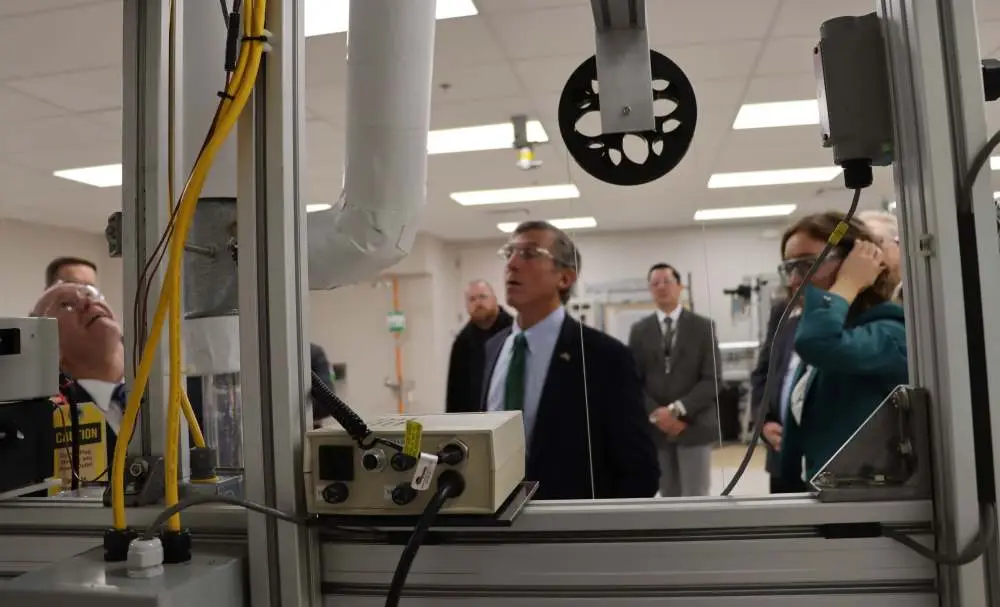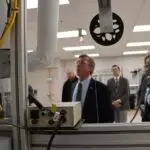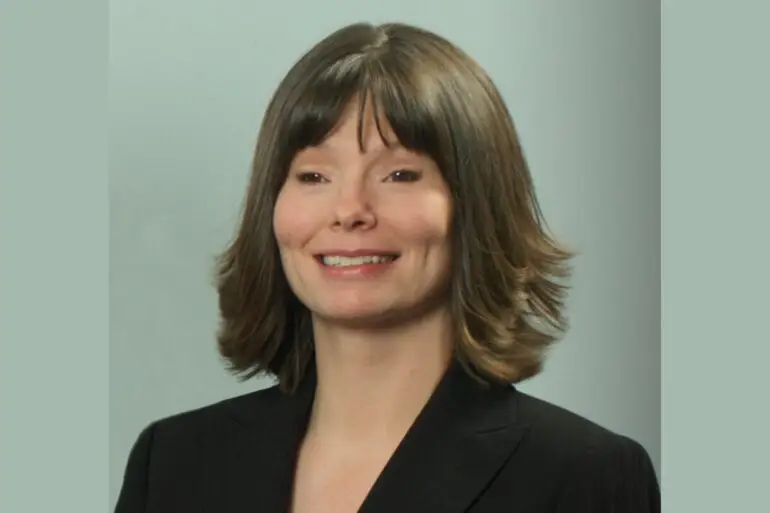-
 play_arrow
play_arrow
Radio Rehoboth
Ardent Technologies preps carbon capture products in new facility


NEW CASTLE — Now with triple the manufacturing capacity and under a new name, Ardent Technologies is now full steam ahead on production of membranes for carbon capture.
Ardent, rebranded from Compact Membrane Systems, opened its new facility in late November in Corporate Commons business park. Backed with a Graduated Lab Grant, Ardent invested $3.1 million in space to include research and development of new membranes that filter select gases to purify carbon dioxide.
The new applied lab and manufacturing site is triple its previous space in Newport, with added capacity and improved lines ensure that Ardent can produce and test membrane solutions that enable near term deployment of commercial carbon dioxide. capture systems.
“This facility represents more than an expansion,” Ardent CEO Erica Nemser said in a prepared statement. “It’s where our 30 years of membrane expertise meets industry’s fundamental need for decarbonization – a momentum independent of political cycles.”
Inside the facility, Ardent develops membranes to keep transformers used in the petrochemical industry running and to do preventative maintenance. But that means they manufacture some of the polymers, the base that holds the thin membrane itself, as well as applying a coating to make the carbon capture process stronger.
The company’s patented Optiperm works to separate nitrogen from carbon dioxide, allowing the harmless gas to pass through emission stacks while trapping the harmful greenhouse gas.
“You don’t want to be piping a lot of nitrogen or spending a lot of energy or infrastructure costs piping in gas,” Ardent Special Projects Director Charlie Swartz told Delaware Business Times. “When you concentrate on the carbon dioxide, you could turn it into chemicals or a biological pathway that humans can use. That’s the technology we’re developing: how to manage our carbon dioxide problem.”
Founded in 1993 by former DuPont employee Stuart Nemser, Ardent is planning to target three other sectors outside petrochemical: agriculture, cement manufacturing and blast furnace steel. Existing separation and capture technology can be expensive and limited to large plants, but Ardent’s membranes are developed as separate parts that can bolt on to machines at a fraction of the cost.
In essence, the company is developing membranes to be a piece of the puzzle to solve emission problems —or provide the solution entirely, depending on the carbon dioxide level the company wants to produce.
“We can offer hybridized solutions for an industry that can tag on carbon dioxide separate technologies like cryogenic distillation or pressure swing adsorption,” Swartz said. “So we’re not in competition, but there’s room for multiple solutions to solve the climate crisis.”
In the next six months, Ardent will be working to build capacity to build 1,000 commercial modules per year, while working to meet client needs for the next three years. Tentative plans had Ardent deliver membrane products to the market potentially as early as 2026.
Go to Source:https://delawarebusinesstimes.com/news/ardent-preps-new-facility/
Author: Katie Tabeling
Written by: Katie Tabeling
Similar posts
Chart
Top popular

News Briefs 10/17/23
Board of Commissioners Workshop & Special Meeting – November 6

Six Sussex road projects considered in latest CTP
NFL Week 17 highlights: Packers, 49ers, Saints, Steelers win, Cardinals stun Eagles
Knicks vs. Cavaliers prediction, odds, line, spread, time: 2023 NBA picks, Nov. 1 best bets from proven model
Copyright 2023 East Sussex Public Broadcasting, Inc.





